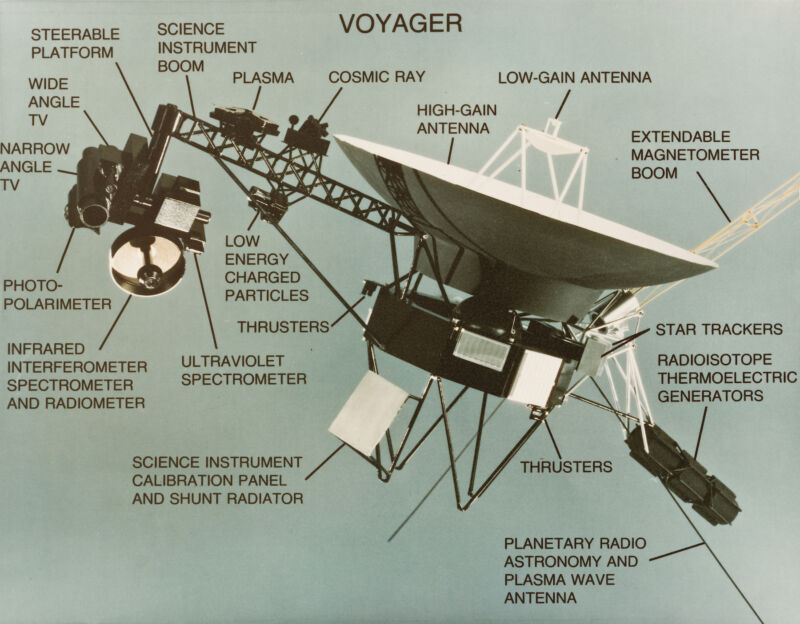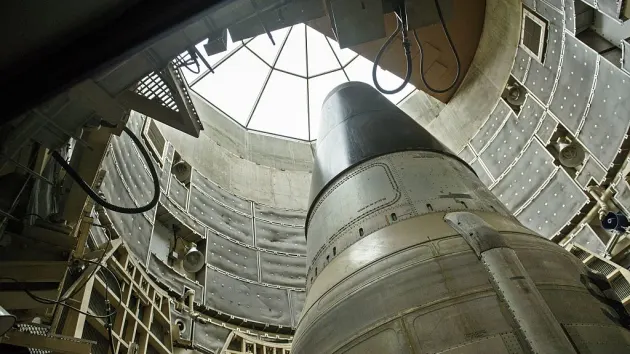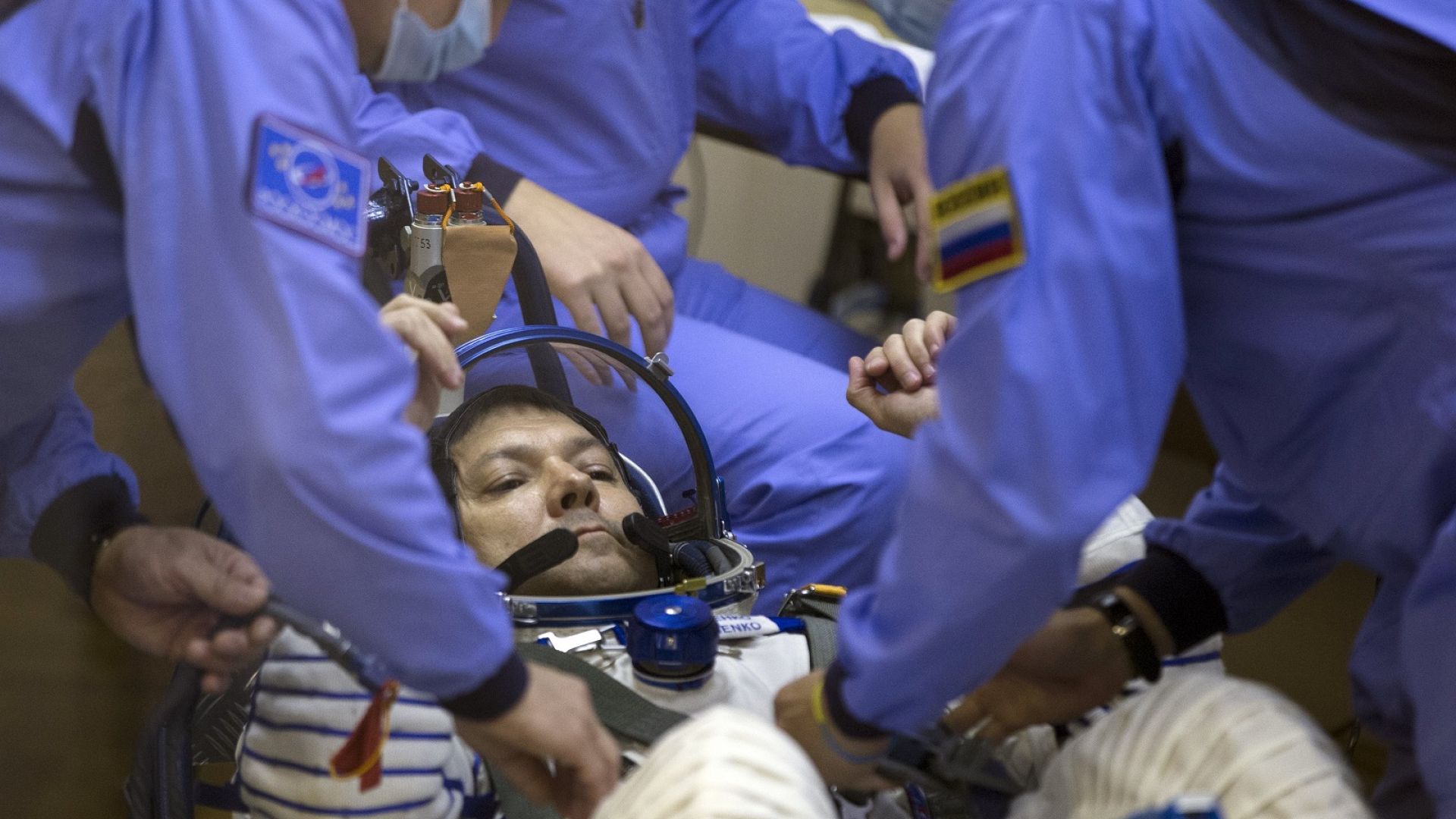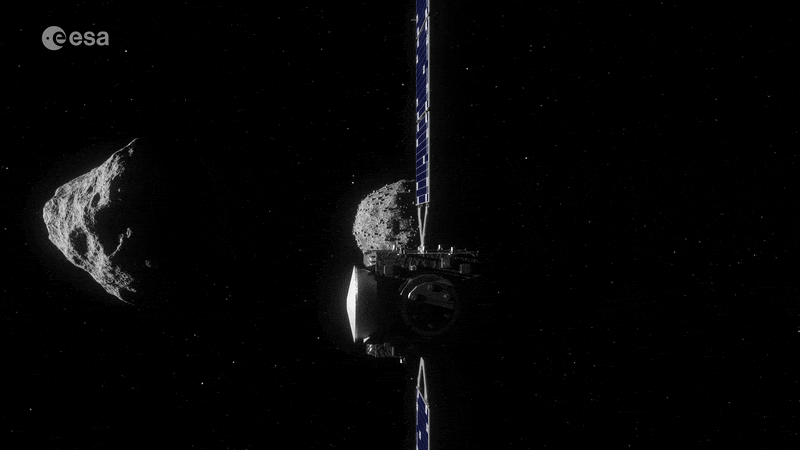TOP NEWS
New Study Updates NASA on Space-Based Solar Power
Space-based solar power offers tantalizing possibilities for sustainable energy – in the future, orbital collection systems could harvest energy in space, and beam it wirelessly back to Earth. These systems could serve remote locations across the planet to supplement the terrestrial power transmission infrastructure required today.
Countries around the world are investing in space-based solar power research and development, and international organizations are focused on reducing carbon emissions to net-zero by 2050. NASA is considering how best to support space-based solar power development. “Space-Based Solar Power,” a new report from the NASA’s Office of Technology, Policy, and Strategy (OTPS) aims to provide NASA with the information it needs to determine how it can support the development of this field of research.
Read more at: NASA
SPACE HAZARDS & STM
Powerful Solar Flare Unleashes Colossal Plasma Plume, Sparks Radio Blackouts Across South Pacific
A powerful solar flare erupted from a giant unstable sunspot last night, triggering radio blackouts on Earth and firing a hot plasma plume through the sun’s atmosphere at speeds of 900,000 mph (400 km/s).The long-duration solar flare from the sunspot region AR3575 began on Monday (Feb 5) at 8:30 p.m. EST (0130 GMT on Feb 6) and peaked at 10:15 EST (0315 GMT on Feb 6), according to solar physicist Keith Strong who posted details about the eruption on X.The eruption also released a coronal mass ejection (CME) — a large release of plasma and magnetic field from the sun. If a CME hits Earth it can cause disturbances to our magnetic field leading to “geomagnetic storms” which can be troublesome for Earth-orbiting satellites but a delight to aurora chasers on the hunt for dramatic displays
Read more at: space.com
Big, Dead European Satellite Will Crash Back To Earth This Month
A dead European satellite will come crashing back to Earth later this month, in a fiery death dive that its handlers will monitor carefully.The incoming spacecraft is the European Space Agency’s (ESA) European Remote Sensing 2 (ERS-2) satellite, which launched to Earth orbit in April 1995 and wrapped up its Earth-observing duties in September 2011.ESA began preparing for ERS-2’s demise even before its primary mission ended, performing 66 engine burns in July and August of 2011. Those maneuvers “used up the satellite’s remaining fuel and lowered its average altitude from 785 km [488 miles] to about 573 km [356 miles] in order to greatly reduce the risk of collision with other satellites or space debris and to ensure the satellite’s orbit would decay fast enough for it to reenter Earth’s atmosphere within the next 15 years,” ESA officials wrote in an FAQ about the coming reentry.
Read more at: space.com
10 Years Preparing for ‘Armageddon’
When the Chelyabinsk asteroid struck the skies over Russia’s Ural region in February 2013, it highlighted humankind’s fragility.
With a mass of around 12 000 tonnes and a size of 19 m, the Chelyabinsk asteroid was the second-largest asteroid to strike Earth in the last century. Impacting the upper atmosphere at a shallow angle and at high speed, it disintegrated, releasing a shockwave that injured more than 1500 people and damaged 7300 buildings. Many people were also injured by shards of flying glass as they peered out of windows to see what was happening.
Read more at: ESA
Fireball Blazes Across Hawaii As Object Falls To Earth
A camera at the Mauna Kea Observatory in Hawaii has captured an object as it burned up on re-entering Earth’s atmosphere on 8 February.
The Subaru-Asahi Star Camera, owned by the National Astronomical Observatory of Japan, recorded a time-lapse of the fireball blazing across the night sky, followed by smaller glowing streaks.
It is thought it could be a Chinese satellite called Object K.
Read more at: BBC
COMMERCIAL SPACE
Virgin Galactic Grounded After A Small Part Fell Off Vehicle During Latest Space Tourism Flight
Virgin Galactic is grounded after the company said a small part unintentionally detached from the mothership of its rocket-powered space plane on its latest space tourism flight.
The loss of the part, called an alignment pin, did not impact the safety of the mission, according to the company. The flight, called Galactic 06, launched on January 26 and marked Virgin Galactic’s first space tourism mission of the year after entering commercial service in 2023.
The company discovered the part loss during routine checks and notified government regulators on January 31, “in accordance with regulations,” Virgin Galactic said in a statement.
Read more at: CNN
Space Industry Urged To Take A Broader View Of Sustainability
The space industry need to take a broader examination of issues related to space sustainability that go beyond preventing the growth of space debris, one official says.
Speaking at the SmallSat Symposium here Feb. 6, Richard DalBello, director of the Office of Space Commerce within the Commerce Department, said there is a need to define a set of “internationally accepted” actions to address issues that range from orbital debris to protecting night skies from satellite interference.
“Usually, when people say ‘sustainability,’ they think space junk, but sustainability is much, much more,” he said. “As tens of thousands of new satellites are launched, space sustainability is going to be a bigger and bigger issue.”
Read more at: spacenews
SpaceX Tests Using Drone Ships to Support Starlink Coverage at Sea
SpaceX’s drone ships have been designed to act as landing pads for rockets. But now the company is exploring using ships as “gateway” stations to bolster Starlink’s coverage at sea.
Last month, the company applied for a temporary FCC license to test operating up to 12 “earth station” antennas over the drone ships. Although Starlink isn’t directly named, the application noted all 12 antennas will communicate with SpaceX’s satellite network.
Read more at: pcmag
Beijing Government Releases Commercial Space Action Plan
Beijing’s municipal government has released an action plan to foster an innovative commercial space ecosystem in the city over the next five years.
The Beijing Action Plan for Accelerating the Innovation and Development of the Commercial Space Industry (2024-2028) includes 18 policy measures.
The action plan focuses on mapping the commercial aerospace industry chain and supporting cutting-edge research and development. It includes enhancing development guarantees, and fostering a high-quality industrial ecosystem.
Read more at: spacenews
Satellite Operators Join Forces To Chase Direct-To-Smartphone Opportunity
A group of satellite operators have joined forces to push the fledgling direct-to-smartphone market to adopt services using their radiowaves, rather than spectrum derived from terrestrial mobile network operators.
Viasat, Terrestar Solutions, Ligado Networks, Omnispace, and Yahsat announced the creation of the Mobile Satellite Services Association (MSSA) Feb. 9, a non-profit aiming to harmonize Mobile Satellite Services for integrating with standardized devices.
Together, they hold more than 100 megahertz of L- and S-band spectrum that they say could help extend terrestrial cellular networks worldwide.
Read more at: spacenews
Starship Launch: Next SpaceX Flight Test Is Expected This Month
SpaceX is getting ready to launch its huge Starship rocket for the third time. But the exact launch date won’t be announced until the US government’s Federal Aviation Administration (FAA) finishes investigating why the last launch – in November 2023 – failed to reach orbit.
The Starship rocket’s first test launch in April 2023 saw it spin out of control because of problems with several of its engines. Those faults activated an automated flight termination system designed to safely blow up the rocket. It failed to do so, and the rocket continued to tumble before disintegrating. It did not make it to space.
Read more at: newscientist
SCIENCE & TECHNOLOGY
Starlink’s Inter-Satellite Laser Links Are Setting New Record With 42 Million GB Per Day
Although laser communication in space is far from novel, its wide-scale deployment as seen with SpaceX’s Starlink satellite internet constellation has brought the technology to the forefront like never before. This was quite apparent during the SPIE Photonics West event on January 30th when [Michael Kan] and other journalists attended a presentation by SpaceX’s [Travis Brashears] on the inter-satellite laser communication performance that was first enabled with the Starlink v1.5 satellites.
Among currently active inter-satellite communication systems, Starlink is by far the most numerous and with the highest bandwidth, reaching over 42 PB per day across its over 9000 space lasers (yes, that is over 9000) for a 5.6 Tbps throughput.
Read more at: hackaday
China To Launch Lunar Navigation And Communications Test Satellites
China is preparing to launch a pair of lunar experimental technology satellites for a planned constellation of satellites to support lunar exploration.
The Tiandu-1 and Tiandu-2 satellites are due to launch along with Queqiao-2, a lunar communications relay satellite to support upcoming Chang’e lunar far side and south pole missions.
Tiandu-1 and 2 will fly in formation in lunar orbit and conduct tests for navigation and communications technology verification. Tests will include satellite-to-ground laser ranging and inter-satellite microwave ranging methods.
Read more at: spacenews
Humanity’s Most Distant Space Probe Jeopardized By Computer Glitch
Voyager 1 is still alive out there, barreling into the cosmos more than 15 billion miles away. However, a computer problem has kept the mission’s loyal support team in Southern California from knowing much more about the status of one of NASA’s longest-lived spacecraft.
The computer glitch cropped up on November 14, and it affected Voyager 1’s ability to send back telemetry data, such as measurements from the spacecraft’s science instruments or basic engineering information about how the probe was doing. So, there’s no insight into key parameters regarding the craft’s propulsion, power, or control systems.
Read more at: Arstechnica

Next-Generation Spaceplanes Are the Cutting-Edge Evolution of the Space Shuttle Dream
NASA’s Space Shuttle operated in low-Earth orbit for 30 years before its retirement in 2011. However, the US space agency’s replacement for this vehicle, Orion, returned to the conical capsule design familiar from the Apollo missions. This was because NASA intended that this newer craft be used for exploring targets in deep space, such as the Moon.But in recent years, we have seen a return of the spaceplane design. Since 2010, the U.S. Space Force (and formerly the U.S. Air Force) has been launching a robotic spaceplane called the X-37B into low Earth orbit on classified missions. China has its own military spaceplane called Shenlong.
Read more at: Gizmodo
NASA Just Received Laser And Radio Messages Together From Even Deeper Space
Over the last few months, NASA has been using its Psyche spacecraft to test a whole new communication system. The probe’s main mission is to visit an asteroid of the same name (16 Psyche) but on its journey there it has been sending laser messages back to Earth.
NASA is testing Deep Space Optical Communications (DSOC) – employing a near-infrared laser to send messages back to Earth. In November, the first test detected the laser signal from 16 million kilometers (10 million miles) away using the Hale telescope, which was for decades the largest telescope on Earth. Among the messages, there was also a cat video.
Read more at: IFLscience
Scientists Reveal SUV-Sized Camera That Will Change Our Grasp Of Space
A revolutionary telescope will come online in 2025. And mounted to it will be a giant camera built to capture extraordinary views of space.
The United States’ SLAC National Accelerator Laboratory is finishing the over 5.5-foot-tall, 6,200-pound (1.65-meter and 2,800-kilogram) LSST Camera, which will snap cosmic images at the much-anticipated Vera C. Rubin Observatory located in the lofty Chilean mountains. The lab posted new images online showing the over 12-foot-long (3.7 m) camera, with its imposing lens, in a clean room.
Read more at: mashable

SPACE POLICY
NASA Investigating Whether It Could Hire SpaceX for Mars Trip
NASA is debating whether to work with commercial partners to get to Mars.
And while SpaceX is the “elephant in the room,” as Ars Technica put it, NASA is keeping its options wide open.
It’s a notable change, as the first time the space agency has openly raised the possibility of working with private space companies to reach Mars. But it’s not surprising either, with NASA having already tapped key industry players to get to the surface of the Moon.
Read more at: futurism
Sydney Leads $2.3M Project For Autonomous In-Orbit Satellite Maintenance
The University of Sydney has embarked on a $2.3 million project to develop autonomous robotic maintenance crews for satellites while they orbit in space.
Dr. Xiaofeng Wu, a Senior Lecturer in Space Engineering at the University’s School of Aerospace, Mechanical, and Mechatronic Engineering, aims to create robotic satellite technologies capable of conducting in-orbit repairs and maintenance tasks.
These efforts are supported by SmartSat CRC and several industry partners based in New South Wales, including Abyss Solutions, ANT61, Space Machines Company, Sperospace, and Spiral Blue.
Read more at: interesting engineering
Greece signs Artemis Accords
Greece became the latest country to sign the Artemis Accords outlining best practices for sustainable space exploration Feb. 9.
In a ceremony at the U.S. State Department, Giorgos Gerapetritis, Greece’s foreign minister, formally signed the Accords. The signing took place as part of a U.S.-Greece Strategic Dialogue meeting.
“As humanity embarks on a great adventure, returning to the moon and preparing for traveling beyond the moon, the Artemis Accords serve as a beacon of collaboration and cooperation among nations, paving the way for a sustainable and peaceful exploration of space,” Gerapetritis said in a statement.
Read more at: spacenews
Commercializing Mars Exploration Could Be NASA’s Best Bet
Ars Technica recently reported that NASA has issued a request for a proposal to private companies for commercial Mars missions. The space agency apparently intends to apply the Commercial Lunar Payload Services (CLPS) approach to exploring Mars.
Taken to its logical conclusion, NASA could upend the historical model of going to Mars just as it has with going back to the moon.
The proposals that NASA is soliciting are modest enough. They consist of satellites and communications relays. The space agency is not contemplating commercial landers on Mars for the time being.
Read more at: thehill
Japanese Moon Startup Faces Discrimination Lawsuits
Together they suggest the Tokyo-based firm, which saw its Hakuto-R lander crash during a debut lunar landing attempt in April last year, suffers from a toxic culture rife with discrimination and harassment against non-Japanese workers.
The lawsuits, filed by the former CEO of ispace’s U.S. branch Kyle Acierno, and one-time Vice President of Spacecraft Development Mohamed Ragab, have both been filed in 2023 and are still waiting to be tried by the Colorado District Court in the U.S.
Read more at: supercluster
SPACE DEFENCE
Space Force May Launch GPS Demonstration Satellites To Test New Tech
The Space Force is exploring options for expanding the capabilities of its GPS satellites and is asking companies to propose ideas for delivering low-cost demonstration spacecraft to help test new technologies.
Space Systems Command, the service’s primary acquisition organization, said in a Feb. 5 notice it is conducting market research to refine its concept for a constellation of GPS demonstration satellites.
Read more at: c4isrnet
Rocket Report: US Military Still Wants Point-To-Point; India’s Big 2024 Ambitions
Was Transporter created to ‘kill’ small launch? SpaceX’s Transporter missions, which regularly fly 100 or more small satellites into low-Earth orbit on Falcon 9 rideshare missions, have unquestionably harmed small satellite launch companies. While companies like Rocket Lab or Virgin Orbit could offer smallsat operators a precise orbit, there was no way to compete on price. “The Transporter program was created a few years ago with, in my opinion, the sole purpose of trying to kill new entrants like us,” said Sandy Tirtey, director of global commercial launch services at Rocket Lab, during a panel at the SmallSat Symposium on Wednesday.
Read more at: arstechnica
Odin’s Eye To Expand EU Space-Based, Missile-Warning System
The European Union is investing €90 million ($97 million) to jumpstart the development of a satellite-based missile early warning system, with a consortium of 43 companies from 14 nations starting work on a simulator.
The project, led by Bremen, Germany-based OHB System AG, in 2021 received an initial €7.5 million from the European Commission to study “space situational awareness and early warning capabilities.” The new project, titled Odin’s Eye II, expands upon these studies and moves things forward by launching the design phase. Announced late last year, it carries an expected price tag of €96.6 million, according to a fact sheet posted on the EU website.
Read more at: defense news
The Critical Role Of Space In Modern Warfare And The Imperative Of Joint Space Capabilities In Europe
In today’s rapidly evolving security landscape, the importance of military space capabilities cannot be overstated. Through satellite-based communication, precise navigation, real-time intelligence and surveillance, and other capabilities, space operations are woven into the fabric of modern military operations. In the European theater, space assets support a wide range of missions, including deterring potential adversaries, responding to crises and protecting the Joint Force and our Allies and partners. The recent establishment of United States Space Forces Europe and Africa (SPACE-EURAF) underscores the vital role space capabilities play in advancing our defense objectives in Europe. European Command, alongside our European Allies and partners, will leverage these assets to deter conflict and uphold peace and security in the region.
Read more at: spacenews
U.S. Engineer Contacted China Before Stealing Missile Tracking Tech, DOJ Says
Federal prosecutors charged an engineer who worked at a Los Angeles-area company with stealing trade secret technologies developed for use by the U.S. government in space to detect nuclear missile launches and track ballistic and hypersonic missiles, the Department of Justice said Wednesday. The DOJ said the technology allegedly stolen by 57-year-old Chenguang Gong would be “dangerous to U.S. national security if obtained by international actors.”
Gong, who lives in San Jose, California, is a native of China who became an American citizen in 2011, prosecutors said. He was arrested Tuesday and is due to appear at a detention hearing later Wednesday.
Read more at: CNBC

VARIOUS
Astronomers Find New Super-Earth That Could Be a Habitable World
Astronomers have found a new Super-Earth orbiting an M-dwarf (red dwarf) star about 137 light-years away.
The planet is named TOI-715b, and it’s about 1.55 Earth’s radius and is inside the star’s habitable zone. There’s also another planetary candidate in the system. It’s Earth-sized, and if it’s confirmed, it will be the smallest habitable zone planet TESS has discovered so far.
TOI-715 is an average red dwarf. It’s about one-quarter the mass and about one-quarter the radius of our Sun. TOI-715b is close to the star, and its tight orbit takes only 19 days to complete one trip around the dwarf star. Since red dwarfs are much dimmer than the Sun, this puts the Super-Earth in the star’s conservative habitable zone.
Read more at: sciencealert
Humans On Mars Could Conduct Far Better Science Than Any Machine
The future of Mars exploration will be greatly enhanced by humans that make the sojourn to the Red Planet. The work that could be performed by astronaut crews on that distant world would far outstrip what mechanized Mars machinery can attain – but certainly at a far greater cost.
To that end, NASA is blueprinting a moon-to-Mars strategy that identifies science as one of three pillars upon which the agency’s quest for a sustained human exploration throughout the solar system is built. What’s now being plotting out is the architecture for achieving that goal.
Read more at: space.com
Ed Dwight Was To Be The First Black Astronaut. At 90, He’s Finally Getting His Due
Ed Dwight grew up in segregated 1930s Kansas on a farm on the edge of town. An airfield was within walking distance, and, as a boy, he’d often go to marvel at the planes and gawk at the pilots. Most were flying back from hunting trips and their cabins were messy with blood and empty beers cans on the floor.
“They’d say to me, ‘Hey kid, would you clean my airplane? I’ll give you a dime,’” Dwight, 90, recalls. But when he was 8 or 9, Dwight asked for more than a dime. He wanted to fly.
“My first flight was the most exhilarating thing in the world,” says Dwight, smiling. “There were no streets or stop signs up there. You were free as a bird.”
Read more at: yahoo
The Secret to SpaceX’s $10 Million Starship, and How SpaceX Will Dominate Space for Years to Come
Elon Musk wants to revolutionize spaceflight — and lower the cost of a space launch by nearly 99%.
In 2010, SpaceX’s founder and CEO took a first step toward this goal with the launch of a Falcon 9 rocket. Priced at $61 million, Falcon 9 cost just 15% the price charged for the Delta IV Heavy rockets ($400 million) it competed with. And in 2018, ahead of the first launch of an improved “Block 5” Falcon 9, Musk promised to lower the cost to less than $5 million.
Abracadabra, at $4 million and change, SpaceX would reduce the cost of space launch by 99%.
Read more at: yahoo finance
Russian Cosmonaut Oleg Kononenko Sets A New World Record For The Most Time Spent In Space
Russian cosmonaut Oleg Kononenko has broken the world record for the most cumulative time spent in space, Russia’s space agency Roscosmos reported on Sunday.
The 59-year-old has now spent more than 878 days and 12 hours in space, surpassing fellow Russian Gennady Padalka, who set the previous record of 878 days, 11 hours, 29 minutes, and 48 seconds in 2015.
Kononenko has made five journeys to the International Space Station (ISS), dating back to 2008.
Read more at: euronews





















![A trajectory analysis that used a computational fluid dynamics approach to determine the likely position and velocity histories of the foam (Credits: NASA Ref [1] p61).](https://www.spacesafetymagazine.com/wp-content/uploads/2014/05/fluid-dynamics-trajectory-analysis-50x50.jpg)


